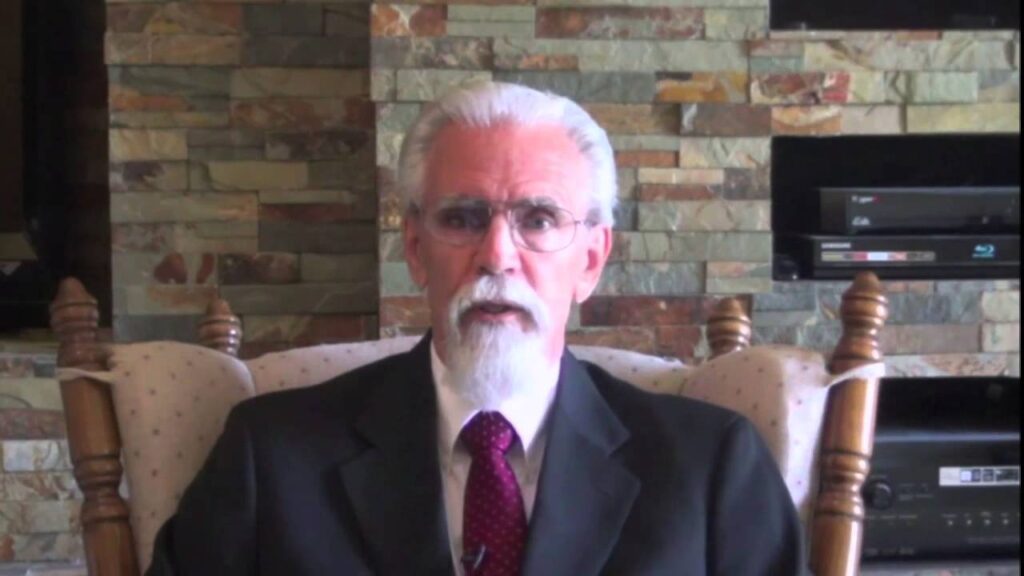Editor’s Note: Sherwood Idso, Ph.D., one of the world’s leading authorities on the effects of carbon dioxide on plants, became president of the Center for the Study of Carbon Dioxide and Global Change in 2001. Idso was honored at the Ninth International Conference on Climate Change (ICCC-9) in July 2014 for his lifetime contribution to science.
Burnett: Please tell our readers a little about your research background and how you ultimately came to study the carbon dioxide fertilization effect on plants.
Idso: My Bachelor of Physics, Master of Science, and Doctor of Philosophy degrees are all from the University of Minnesota. Upon graduating, my family and I moved to Phoenix, Arizona, where I worked for 34 years as a research physicist with the U.S. Department of Agriculture’s Agricultural Research Service at the U.S. Water Conservation Laboratory, while simultaneously serving as an adjunct professor in the Departments of Geology, Geography, and Botany and Microbiology at Arizona State University.
Over the course of my professional career, I authored or coauthored more than 500 scientific publications, as well as two books: Carbon Dioxide: Friend or Foe? and Carbon Dioxide and Global Change: Earth in Transition. I also served on the editorial board of the international journal Agricultural and Forest Meteorology from 1973 to 1993, after which I served on the editorial board of Environmental and Experimental Botany for several more years. And over the full course of my scientific career, I also served simultaneously as an invited reviewer of manuscripts for 56 different scientific journals and 17 different funding agencies.
As a result of my early work in the field of remote sensing, I was honored with an Arthur S. Flemming Award, given, in the words of its presenters, in recognition of my “innovative research into fundamental aspects of agricultural-climatological interrelationships affecting food production and the identification of achievable research goals whose attainment could significantly aid in the assessment and improvement of world food supplies.” This citation continues to express the spirit animating my continuing research into the biospheric consequences of the ongoing rise in the air’s CO2 content.
As for how I came to study the effects of atmospheric CO2 enrichment on plants: I joined forces with Dr. Bruce Kimball, who also worked at the U.S. Water Conservation Laboratory and who had developed the technology required to conduct such studies out-of-doors in open-top, plastic-wall growth chambers. Together, we studied numerous field crops and a number of tree species, one of the latter, orange trees, lasted for seventeen long years. And somehow we also managed to squeeze in studies of more diverse plants, including one plant species that produced a cancer-fighting substance in its underground bulbs. [The] substance was greatly augmented by exposure to extra atmospheric CO2, along with water hyacinths, the latter “borrowed” from the alligator pond at the Phoenix Zoo.
Burnett: You’ve conducted or reviewed literally thousands of experiments on the impacts of differing carbon dioxide concentrations on plant growth. What are your overall findings?
Idso: I have found if fossil fuel usage is not foolishly restricted in a misguided attempt to prevent climate change—previously referred to as global warming—the expected increase in anthropogenic CO2 emissions will significantly enhance the yields and water-use efficiencies of essentially all of the world’s food crops, allowing us to continue to feed the world’s growing population up to and far beyond the year 2050, when it is expected to peak out at approximately nine billion people, compared to today’s 7.2 billion.
Burnett: After retiring from your government position, you joined the Center for the Study of Carbon Dioxide and Global Change. What is its mission, and what research do you undertake there?
Idso: The [Center for the Study of Carbon Dioxide and Global Change] was created to disseminate factual reports and sound commentary on new developments in the worldwide scientific quest to determine the climatic and biological consequences of the ongoing rise in the air’s carbon dioxide content. It meets this objective through near-daily mini-reviews of recently published peer-reviewed scientific journal articles, books, and other educational materials. Via these means, the Center attempts to separate reality from rhetoric in the emotionally charged debate swirling around the subject of carbon dioxide and global change.
Burnett: You recently worked on the Nongovernmental International Panel on Climate Change report, titled Climate Change Reconsidered II: Biological Impacts. What were the critical findings of this undertaking?
Idso: It’s hard to condense a 1,110-page document into just a few key points, but foremost among our findings were, first, atmospheric carbon dioxide is not a pollutant. It is a nontoxic natural component of the atmosphere that long-term and short-term studies alike have shown to improve both plant growth and water-use efficiency as its atmospheric concentration rises. Second, consistent with research on the impact of increasing carbon dioxide levels on plant productivity, the ongoing rise in the air’s CO2 concentration is causing a great greening of the Earth. Third, a modest warming of the planet will actually result in fewer temperature-related human deaths, in strong contradiction of the opposite claim [made by] the world’s climate alarmists.
H. Sterling Burnett, Ph.D. ([email protected]) is a research fellow with The Heartland Institute.
Internet Info
Craig D. Idso, et al., Climate Change Reconsidered II: Biological Impacts, Nongovernmental International Panel on Climate Change, April 9, 2014: http://climatechangereconsidered.org/





